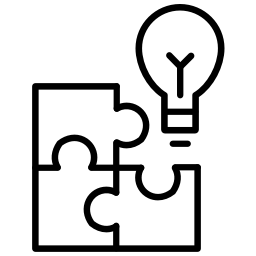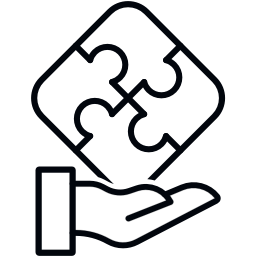YOU ARE VIEWING A DEMO REPORT
Angela Person

Teacher Development
Self-Aware Student
01 Teacher Strengths & Preferences ENFP
Back to Table of ContentsTeacher strengths and preferences
Overview
More Likely Angela
Less Likely Angela

Angela's Teacher Strengths:
- Starting new programs
- motivating others
- developing creative projects
- engaging students in large-scale creative endeavors
- providing space for creativity
Less Likely Angela

- Administrative tasks
- setting up systems
- using data
- working with established curriculum
- taking a pragmatic approach to teaching and learning

- Handling details
- working one-on-one with students
- creating a respectful classroom atmosphere
- implementing curriculum
- day-to-day classroom routines

- Theorizing about ways to improve student learning and then logically testing them
- providing rigorous assignments
- getting students to think
- using data
Preferred Types of Information
The big picture
These teachers are motivated by improving students' motivation, self-esteem, or altruism more than by improving test scores, even though they're well aware of the importance of data.
A vision of how each student will be affected
Objective data leave them cold unless it 's accompanied by qualitative evidence that students will also grow personally.
Stories of systemic change
They'll often pursue in-depth knowledge of a model or theory if it's presented with case studies of how a school changed or how a targeted group of students embraced academics.
02 Learning with Cognitive Preferences ENFP
Back to Table of ContentsFour instruction approaches based on cognitive processing preferences
Preferred Learning Approaches
More Likely Angela
 Let Me Lead As I Learn
Let Me Lead As I Learn
Question & Connection
- Start with the big picture, not the details
- Let me dream big without penalties
- Let me find a new way to do it
- Let me experiment
- Give me choices
- Keep changing what we do
- Let me teach or tell someone what I’ve learned
- Let me be in charge of something
- Let me talk or work in groups
- Let me come up with my own ideas
Less Likely Angela
 Let Me Do Something
Let Me Do Something
Experience & Movement
- Start with hands-on activities
- Give me steps to follow
- Build on what I already know
- Tell me why I’m learning something
- Give me chances to talk, move, and work in groups
- Set a realistic deadline
- Give me examples
- Provide clear expectations
- Go light on theory
- Let me apply it immediately
 Let Me Follow My Own Lead
Let Me Follow My Own Lead
Vision & Interpretation
- Let me delve deep into things that interest me
- Avoid repetition and routine
- Let me figure out for myself how to do things
- Give me choices
- Listen to my ideas
- Let me learn independently
- Let me start with my imagination
- Help me bring what I envision into reality
- Give free rein to my creativity and curiosity
- Provide references for me to build my own knowledge base
Least Likely Angela
 Let Me Know What To Do
Let Me Know What To Do
Structure & Certainty
- Set clear expectations and goals
- Show me examples
- Provide the steps in writing
- Answer my questions as I have them
- Give me time to think
- Let me work with and memorize facts
- Avoid too many surprises
- Build on what I already know
- Let me know along the way if I’m doing things right
- Connect content with past efforts and experience
03 Teacher Traps & Avoiding Them ENFP
Back to Table of ContentsTeacher traps across several dimensions and steps that can be taken to avoid the traps.
 Enthusiastic Teacher Traps and Tricks
Enthusiastic Teacher Traps and Tricks
Traps Enthusiastic Teachers Might Fall For:
- Look for outward enthusiasm as a sign of student engagement.
- Not give enough wait time for many students to process their thoughts. Some students describe it this way, “By the time I’m ready, all the good stuff has been said.”
- Give second and third prompts when a student delays in responding, thinking the student needs more information. This actually interrupts the thinking process and causes a longer delay.
- When trying to elicit enthusiasm from many students, for whom just being in school all day is difficult, instead overwhelm and tire them out.
Enthusiastic Teacher Tricks To Avoid Traps:
- Ask others what they are thinking but allow for reflection—maybe even a two-minute quickwrite.
- Set agendas and provide thought questions, written material, or data collected for reflection before the session.
- Practice paraphrasing to ensure you are listening.
- Practice holding your tongue, especially if you are in charge—ten seconds can lead to a significant increase in response from others.
- Slow down and reflect before deciding.
 Imaginative Teacher Traps and Tricks
Imaginative Teacher Traps and Tricks
Traps Imaginative Teachers Might Fall For:
- See a student’s need for clarity as a lack of creativity.
- Understructure assignments, not wanting to stifle the imagination or individuality of students.
- Emphasize themes and projects or drama more than teaching or reinforcing fundamental skills.
- Embrace almost any change, jettisoning techniques or curriculum that should be kept.
Imaginative Teacher Tricks To Avoid Traps:
- Provide clear goals and procedures. Practice relaying direct, specific facts.
- Bring ideas that have immediate classroom applications that tie changes to current or past practices.
- Remember to evaluate current practices and keep what is working.
- Translate theories into examples from classrooms.
- Practice explaining your thinking and allow for clarifying questions.
 Warm Teacher Traps and Tricks
Warm Teacher Traps and Tricks
Traps Warm Teachers Might Fall For:
- Get drawn into unproductive arguments, trying to reason with a student who just enjoys verbal sparring.
- Offer too much nonspecific praise.
- Not hold fast enough on rules, which can undermine authority.
- Strive for building relationships over providing rigor, when both are essential.
Warm Teacher Tricks To Avoid Traps:
- Remember to voice concerns and points of disagreement in healthy ways—burying conflict can make it worse.
- Assume your ideas will be debated—do not take it personally.
- Collect objective data to persuade and explain how strategies relate back to theories.
- Be careful about the amount of meeting time spent on socializing.
- Practice cause-and-effect and if/then reasoning to explain ideas.
 Spontaneous Teacher Traps and Tricks
Spontaneous Teacher Traps and Tricks
Traps Spontaneous Teachers Might Fall For:
- Change deadlines and plans, frustrating some students.
- Under- or over-estimate how long activities might take.
- Not give parameters; students don’t know when they’re done.
- Add to a unit when they find another good idea.
Spontaneous Teacher Tricks To Avoid Traps:
- Work with the team on timelines for bringing closure to each process.
- Be extra conscientious about timeliness.
- Plan backward from group deadlines to ensure you know when you need to start.
- Ask permission before changing a plan, and provide a clear reason for the change.
- Remember that while some students might stop trying once a goal is reached, others who reach a goal may simply set a new, related goal.
04 How to Work With This Teacher ENFP
Back to Table of ContentsHow to communicate and work with this teacher
How to Assist & Coach Angela
Angela prefers a:
Coach as Collegial MentorWhen working with and coaching Angela, you'll need:
- Patience and listening skills
- skills in adding structure to ideas
- objectivity regarding root causes of difficulties
How Best to Help & Coach Angela
- Teachers like Angela march to their own beat; coaches need to keep this in mind. Engage in conversations to help Angela use her creativity. Let her generate her own ideas for critique instead of providing suggestions.
- Show Angela how to communicate with concrete examples of abstract concepts and techniques, providing demonstrations and directions for each one.
- Demonstrate how to provide structure while still allowing for student creativity. Provide examples of rubrics or objectives that give clear direction yet avoid the overstructuring that Angela hates.
- Let her talk through several scenarios before deciding on strategies.
Effective roles to take when working with Angela
Study Groups
Angela likely prefers to read about and discuss new ideas. If she prefers Introversion, her best route to change is first independent study, then innovating in her classrooms, and, finally, sharing results and student work.
Collegial Observations
Angela may appreciate specific feedback when implementing classroom changes. Use a preobservation conference to identify the information she would like to receive from you. Angela is more open to modeling and coteaching than some types-unless a new strategy is out of their comfort zone
Consultant
Angela may often prefer to go as far as she can on her own with a new idea. Instead of working with Angela in the early stages of lesson planning or strategy implementation, ask if she would like to outline her ideas and then run them by you.
Troubleshooter
Advertise coaching as assistance for reaching the most reluctant learner, the most difficult class, the subject Angela least prefers to teach, and so on.
05 Real Wait Time - Differentiated Instruction ENFP
Back to Table of ContentsUsing the "wait time" strategy for easy and doable differentiated instruction
Using just two steps, “Doable Differentiation” is an entirely different approach. Using the cognitive processing (see also Visual Type™) framework for differentiation gets at the root differences in the instructional approaches teachers employ and students find most natural. The four combinations of how we are energized and take in information make the four Instructional Approaches, one for each of the cognitive processes, that are the framework for Doable Differentiation.
Doable Differentiation Strategy #1:
Wait Time
Wait time differentiates by helping all students develop the following essential social and emotional learning skills:
- Sharing thoughts
- Holding thoughts
- Collaborating
- Working independently
- Thinking before they speak
- Speaking up even if they’re unsure they have a fully correct answer
- Listening to and building on the ideas of others
It increases the number of students who participate and thus contributes to equity.
Wait time also helps teachers easily accommodate the needs of students who need different instruction approaches.
Benefit greatly from time to think before being asked to share thoughts or join in group processes.
If scaffolded via these strategies that help them hold their thoughts, benefit by going beyond their first thought and enriching their responses
If you need evidence that Wait Time is worth the effort, read Ingram and Elliott (2016) A critical analysis of the role of wait time in classroom interactions and the effects on student and teacher interactional behaviours. Otherwise, try one of the following differentiation strategies.
Wait Time Differentiation Strategies
One, one thousand, two one thousand…
Yes, counting to five after asking a question significantly increases the number of students willing and ready to respond. If you are facilitating an online course, you may need to count to ten. Let students know that you are doing this; to some (and to many teachers) five seconds seems like an eternity.
Ten hands up.
Pose a question and let students know you won’t call on anyone until at least ten (or 5 or 18 or whatever number seems right) hands are in the air. If it’s the middle of the afternoon and your students seem tired, ask for ten feet up, or hands on heads, or anything to wake them up.
Wait/Go Cards.
Have students make cards that have a red hexagon for wait on one side and a green circle for go on the other (adding the shapes allows students who are color blind to use the cards). You can use these in several ways.
- Pose a question and have students turn over their cards when they are ready to speak. You may require all cards to be turned or set a different number. Depending on the complexity of the question, teachers have reported that it can take 10 minutes for all students to be ready, but then all students have readied good answers. If a few students seem to be stalling, move on regardless.
- Have students place the cards “Go” side up in front of them and turn it to “Wait” if they have a question, need feedback on their work, or are ready to move on. This allows you to troubleshoot and perhaps gage when a mini lecture might be needed if too many students seem stuck.
- Have students use the cards in small groups. They start with cards on “Wait” as they all consider individually whether they understand the group task and think about how they might proceed, turning to “Go” when they are ready to discuss.
Discussion Protocols.
Keep using protocols such as “Think-Pair-Share” and “Last Word” that incorporate wait time.
Original work by: Jane Kise © Step Research Corporation
06 Real Choice - Differentiated Instruction ENFP
Back to Table of ContentsUsing the "choices" strategy for easy and doable differentiated instruction
Using just two steps, “Doable Differentiation” is an entirely different approach. Using the cognitive processing (see also Visual Type™) framework for differentiation gets at the root differences in the instructional approaches teachers employ and students find most natural. The four combinations of how we are energized and take in information make the four Instructional Approaches, one for each of the cognitive processes, that are the framework for Doable Differentiation.
Doable Differentiation Strategy #2:
Choice
Choices differentiate by increasing autonomy, a core human need and motivator.
Providing choice is one of the quickest ways to differentiate via the content students will work with, the processes they will experience while learning, and/or the products that show their learning, including assessments. This strategy lets you move among the Instruction approaches in a different way than Wait Time.
Thrive when allowed opportunities to be unique and use their creativity. Choice is an easy way to increase their autonomy.
Benefit from scaffolded experiences where they aren’t supposed to simply follow directions, copy worked examples, or do exactly what classmates are doing. Further, they often need permission to do things such as tackle the problems they understand first and circle back to the harder ones, rather than doing them in order—things the other two styles do naturally!
Choice Differentiation Strategies
You’ve probably given choices before, but try these methods to ensure that the choices actually differentiate for students who learn in different ways.
Motivating Words
Think about it. Would you rather “make” or “create”? “Discuss” or “debate”? “Solve” or “figure out”? You’ll find these motivating words for each Instruction Approach by clicking on their descriptions. Incorporate more than one word in directions. “Organize or assemble your notes.” “List or write about…” “Answer or elaborate on…”
Place
Rethink class space. Are there standing desk-height” surfaces students might work at? Whiteboards where partners might collaborate rather than on a small screen? Carpet spots they might sit on while reading? Places simply to stand, especially if they’re really too big for long lengths of time in those desks with fixed arms? Yes, with privilege goes responsibility to not bother other students, but choice of place can go a long way in preempting students moving about when you least want them to.
“Five of Six”
If you’re posing six questions, allow students to answer five of six. If you’re assigning problems, have all students do, say, the first eight and give them a choice of the ninth or tenth. With this tiny bit of autonomy, many students choose to do all of them anyway!
Solo or Partner
Many cultures thrive on collaboration, not individuality. Consider opportunities beyond small group work where students can have the choice of working alone or with a partner. Ask them to reflect on the quality and efficiency of their work in both cases. When do they do their best work? What strategies might they use to improve when working alone? With a partner?
Objective and Subjective
Whenever possible, provide both a structured and an open-ended alternative as a writing prompt—in any content area. Consider these pairings for ideas:
- List the major events in the story and why each is important to the story OR Rewrite the story through the eyes of another character
- Write a report on the impact [any historic figure] has today OR Write a letter to [an historic figure] that captures her/his ongoing legacy.
- Turn in an outline for your project OR Turn in a graphic recording/mind map that captures how you will do your project
With more planning, you can give choices in content, processes, and products as long as all students reach the same learning goals and you provide choices that appeal to all four instructional approaches. But the four simple strategies above are immediately useful.
Original work by: Jane Kise © Step Research Corporation
07 Four Approaches - Differentiated Instruction ENFP
Back to Table of ContentsFour instruction approaches based on cognitive processing preferences
Using just two steps, “Doable Differentiation” is an entirely different approach. Using the cognitive processing (see also Visual Type) framework for differentiation gets at the root differences in the instructional approaches teachers employ and students find most natural. The four combinations of how we are energized and take in information make the four Instructional Approaches, one for each of the cognitive processes, that are the framework for Doable Differentiation.
Differentiation Instruction:
Understanding Doable Differentiation
Differentiated instruction involves adjusting instruction for individual learners’ needs, styles, cultural values, and/or interests. Differentiation is a core foundation of equitable practices, yet about 85 percent of teachers report that it is difficult or nearly impossible to do in their classrooms with the tools they’ve been given.
Perhaps you’ve attended training to learn how to adjust the content students work with, or the processes they use to master that content, or the products they produce that demonstrate their mastery. These are sound principles for differentiation. However, they can be difficult to implement and, if not done appropriately, can actually create learning activities that serve to keep students at lower levels.
“Doable Differentiation” is an entirely different approach that involves just two steps. Using the cognitive processing framework (see also Visual Type™) for differentiation gets at the root differences in the instructional approaches teachers employ and students find most natural. Rather than labeling what students can and can’t do, you’ll be using strategies to ensure that:
Differentiation Instruction:
The Four Combinations
Everyone—adults and students—has the energy they need to learn. It’s almost a cosmic joke that there is an even split for how students need to get energy to learn.
About half of students need
action and interaction to learn
![]()
Enthusiastic,
Friendly, and
Outgoing Students
While the other half of students need
quiet and reflection to learn
![]()
Private,
Quiet, and
Reflective Students
You have both in your classroom.
The Doable Differentiation strategies ensure that both groups stay energized for the hard work of learning—without exhausting you!
Everyone has the information they need to reach mastery of standards and learning targets.
About half of students want
structures and proven methods
![]()
Realistic,
Active, and
Observant Students
The other half want
room to roam as they learn
![]()
Imaginative,
Creative, and
Insightful Students
Again, your classroom is filled with both.
Instructional approaches that provide students with information in the way they process it best is essential whenever they move into unfamiliar territory. The Doable Differentiation strategies help you understand how to meet those informational needs while at the same time giving students strategies to “Stretch” when content requires them to learn in ways that aren’t as comfortable.
The four combinations of how we are energized and take in information make up the four cognitive processes and the four Instructional Approaches that are the framework for Doable Differentiation.
Differentiation Instruction:
Two Steps
Here are the two steps of “Doable Differentiation.”
Prestep: Clarify lesson goals. This isn’t the first of three steps, but rather an essential part of planning for equitable instruction. All too often, educators assume they’ve accomplished this by focusing on a standard or on a curriculum unit. Dig deeper. What will students learn to mastery? Clear learning objectives are crucial before adjusting instruction, or the content students will work with, or assignments, or assessments, to ensure that all learners are reaching the intended goals.
Step 1: Plan for the way you’d normally teach the materials or how the curriculum presents the materials. Teachers need to use their strengths and often also need to adhere to curriculum elements. Further, content should drive instruction. Think about these examples of how content drives use of the four cognitive processing styles we’ll incorporate.
You can’t learn science lab techniques without hands-on learning.
At some point, reading has to involve independent, silent reading.
Some content requires mastery through practice and even memorization.
Some content works best with collaborative, rigorous group activities.
However, it isn’t equitable nor advantageous to any student when course content is delivered via one style. So what should you do?
Step 2: Adjust for students who have different needs, or who just don’t think like you. Perhaps you’ve seen research that teaching to learning styles doesn’t improve student achievement (See Corwin Visible Learning website). Doable Differentiation incorporates a model of four different cognitive processes; we don’t all use our brains in quite the same way. However, instead of matching students with strategies that meet their processing styles, you’ll consider the best style for the content while ensuring that, over time, your classroom activities involve all the styles. Look back at the examples in Step 1—these illustrate how all students need to develop strategies for learning via all cognitive processes.
Consider the difference between these two student attitudes,
- “This is hard. I can’t do it” or “This is stupid and I don’t want to do it.”
- “This makes me uncomfortable because it’s out of my style. I need to develop strategies and my teacher can help me.”
Doable differentiation fosters the second attitude in students.
Big Idea: Not every minute of the day needs to be differentiated!
Sometimes, every student does need to be doing the same thing at the same time. Be sure to keep an eye out, though, for whether you’re defaulting too much to your own style or the style favored by your curriculum. How much to differentiate? Enough to ensure no student becomes “allergic” to your class or a subject area! As you plan for instruction, deliberately decide when and how you will meet the needs of students with each cognitive process:
- Over the course of a unit?
- By changing up the kinds of final projects for different unit?
- By changing up activities throughout the day
- By constantly incorporating the two strategies introduced here—Wait Time and Choice—that can be easily incorporated into existing lessons.
More information Differentiation through Personality Types (Corwin, 2007) Doable Differentiation (Solution Tree, in production)
Doable Differentiation suggests 13 strategies that help you meet the needs of all students. Most can be incorporated into existing lessons. Others go deeper for planning new lessons and units. Wait Time and Choice are the two easiest to implement.
Four Key Instruction Approaches
Let Me Do Something
Experience & Movement
Let Me Know What To Do
Structure & Certainty
Angela's LEAST preferred cognitive processLet Me Lead As I Learn
Question & Connection
Angela's MOST preferred cognitive processLet Me Follow My Own Lead
Vision & Interpretation
Read About the Four Key Instruction Approaches
Experience & Movement
Students who prefer this approach want:
- Start with hands-on activities
- Give me steps to follow
- Build on what I already know
- Tell me why I’m learning something
- Give me chances to talk, move, and work in groups
- Set a realistic deadline
- Give me examples
- Provide clear expectations
- Go light on theory
- Let me apply it immediately
An essential approach for:
- Structured science lab skills and other experiments
- music
- physical education
- keyboarding
- working with manipulatives (such as in mathematics)
- many maker space activities
- simulations
Motivating Words
- Build
- show
- assemble
- tell
- discover
- make
- demonstrate
- figure out
- touch
- design
- suggest
- solve
- choose
- construct
- examine
- explore
- discuss
Additional strategies that use this approach:
- Places
- Mystery Draws
- The Bug List
- Spider Web Discussions
- Manipulatives
- Story Aids
- Card Sorts
- Group Whiteboards
- Big Manipulatives
- Standing Room, Wiggle Room
- Question Hunts
- Forced Choice
- Task “Fetch”
- Stations
- Talking to Write
Angela's LEAST preferred cognitive process
Structure & Certainty
Students who prefer this approach want:
- Set clear expectations and goals
- Show me examples
- Provide the steps in writing
- Answer my questions as I have them
- Give me time to think
- Let me work with and memorize facts
- Avoid too many surprises
- Build on what I already know
- Let me know along the way if I’m doing things right
- Connect content with past efforts and experience
An essential approach for:
- Practice for mastering math facts and algorithms
- spelling
- assignments with specific directions
- structured writing assignments such as lab reports
- building content knowledge
Motivating Words
- Read
- identify
- list
- label
- name
- notice
- observe
- apply
- analyze
- graph
- examine
- work
- prepare
- do
- organize
- complete
- answer
- listen
Additional strategies that use this approach:
- Assignment Menus
- Direct Instruction
- Describing the World in Numbers
- Assign Discussion Roles
- Thinking Maps
- Graphic Organizers
- Segmented Notes
- Learning Progressions
- Essential Question Priming
- Discussion Protocols
- Worked Examples
- Advance Organizers and Learning Maps
- Having Students Monitor Their Own Progres
Angela's MOST preferred cognitive process
Question & Connection
Students who prefer this approach want:
- Start with the big picture, not the details
- Let me dream big without penalties
- Let me find a new way to do it
- Let me experiment
- Give me choices
- Keep changing what we do
- Let me teach or tell someone what I’ve learned
- Let me be in charge of something
- Let me talk or work in groups
- Let me come up with my own ideas
An essential approach for:
- Collaborative problem solving
- student-centered discussions
- debate
- simulations
- role play
- group problem-based learning
- group inquiry-based science labs
- outdoor environmental learning
- drama
Motivating Words
- Create
- discover
- pretend
- design
- develop
- discuss
- synthesize
- collaborate
- find a new…
- generate
- visualize
- evaluate
- problem-solve
- experiment
- invent
- hypothesize
Additional strategies that use this approach:
- Task Order
- Anticipation Guides
- Stop the Story
- Tea Party
- Open Questions for Texts
- Posthole Questions
- Multiple Right Answers
- Freeform Organizers
- Graphic Recording, Nonlinguistic Representations
- Concept Map Manipulatives
- All-Class Brainstorming
- Pocket Problems
- Yes/And Improvisation
- Simulations and Role Plays
Vision & Interpretation
Students who prefer this approach want:
- Let me delve deep into things that interest me
- Avoid repetition and routine
- Let me figure out for myself how to do things
- Give me choices
- Listen to my ideas
- Let me learn independently
- Let me start with my imagination
- Help me bring what I envision into reality
- Give free rein to my creativity and curiosity
- Provide references for me to build my own knowledge base
An essential approach for:
- Individual
- open-ended tasks including complex problem solving
- creative writing (narrative - poetic - persuasive - fictional)
- independent study
- individual inquiry-based assignments
Motivating Words
- Read
- think
- consider
- design
- evaluate
- clarify
- speculate
- dream
- envision
- paraphrase
- brainstorm
- create
- elaborate
- illustrate
- write
- reflect
- chew on
- make connections
- compare
- contrast
- compose
Additional strategies that use this approach:
- Task Order
- Choice in Reading Materials
- Key Word Prediction
- Stop the Story
- Open Questions for Texts
- Catalysts
- Freeform Organizers
- Graphic Recording, Non-linguistic Representations
- Prior Knowledge Stations
- Imaginative Dialogue
- Student-Generated Open Questions: K-W-H-L Brainstorming
- Visual Entry Points
Original work by: Jane Kise © Step Research Corporation
08 Preference Development ENFP
Back to Table of ContentsThese describe various activities and exercises for your development.
You have the capability of building skills related to your natural preferences – the ones you have in your type code – as well as the preferences you do not have in your type code. Most people have, through their lives, naturally built skills in the areas their preferences have drawn them towards. More often, it is therefore the preferences they do not have in their type code where training would be beneficial.
Once you have developed skills within all eight preferences, you can more easily choose the behaviour that is most appropriate in any given situation. Thus, you will expand your "behavioural toolbox" as well as find that the use of a trained preference does not require as much energy.
Preference for Extraversion
The opposite is called IntroversionYour Strengths:
- Energised by the outer world
- Talk, think, talk
- Action
- Breadth
This means you typically look like this to other people:
- Talk a lot – and often loud and fast. Respond quickly.
- Process out loud so others tend to know what they are thinking. Develop ideas through discussion.
- Interrupt when you are speaking – seem eager or impatient.
- Discuss a variety of subjects at the same time and move quickly from one topic to the next.
- Pay attention to the external world – get distracted easily.
- Use body language, gesticulate and share their energy outwardly.
- Take initiative in making contact with other people – use eye contact, small talk, often start a conversation.
- Push to get started right away – action oriented. Do not need much reflection time. “Shoot from the hip”.
- Contribute enthusiastically when working in groups. Want to learn new tasks by talking and doing.
- Have a broad social network and a variety of interests.
- Do not seem to mind interruptions when working.
- Prefer spoken communication rather than written communication when they are free to choose.
This means your opposite typically looks like this to other people:
- Listen more than they talk – and often speak calmly. Talk more in one-on-one situations.
- Process internally – when talking, they most often only convey the essence/conclusion of their chain of thought.
- Pause in the conversation – and shut down if you interrupt them. May seem withholding.
- Talk in-depth about one subject before moving to the next.
- Sustain concentration and focus for long, and they may seem like they are in their own world.
- Calm body language – seem reserved.
- Limit social interaction with other people to what is “necessary”.
- Seem cautious and hesitant – they need time to reflect before acting.
- Enjoy working alone and like quiet surroundings. Want to learn new tasks by reading and reflecting.
- Have few but close relationships and explore interests in-depth.
- Seem to be disturbed by interruptions when working
- Prefer written communication rather than spoken communication when they are free to choose.
Areas for development that are typical challenges:
LISTEN MORE
Ways to develop:
“Listen-more-day” – Plan a “listen-more-day”. Reflect. Say only something when necessary. Give others time to answer and find peace in silence. Pause at least ten seconds longer than you normally would before you say something. Note what happens with the dynamics in the conversation.
Do not interrupt – For one day focus on not interrupting. Let people finish talking. Do not interrupt in the middle of an argument. Stop yourself if you accidently do it anyway. Get feedback from other people on how being interrupted affects them.
Listen to understand – Pick out a planned conversation. Listen to what the other person is saying. Practice staying attentive to his or her inputs rather than thinking of what you will say in response. Listen to the other person's point of view and describe what you heard before you allow yourself to talk about your perception and point of view.INNER PEACE
Ways to develop:
Find peace of mind – Take lessons in meditation, breathing techniques or mindfulness. Practice. Set aside time each day or week to visit your inner world. Learn to feel comfortable in your own thoughts and feelings.
Spend time alone – Say “no” to a social activity or event you would normally say yes to. Make a list of things you like doing alone and do this instead. If you need inspiration, ask a friend who prefers I.
Clarify thoughts alone – Reflect on the importance of an experience or an event by yourself. Contemplate impressions by yourself. Make an important decision alone. Practice clarifying your thought without speaking to others.DEPTH AND FOCUS
Ways to develop:
Seek depth in conversation – Pick out a person at a social event and talk in depth about a subject one-on-one. Everyone has something they are better at than you or an interest in something you do not know about. Find out what it is and let them be the ones that talk the most.
Examine in dept – Identify various subjects that interest you. Instead of breadth go into depth with one of the subjects. Allow more time than you think is necessary. Be patient and "look for the nuances."
Create a framework for focus – Pick out a task to work on alone. Find a quiet place where you will not be disturbed. Plan your breaks and stick to them. Control your craving for variation. If you feel the urge to talk, talk to yourself.REFLECTION
Ways to develop:
Communicate in writing – Resist the temptation to choose verbal communication just because it is possible. Pick out three situations during the coming week where you would normally meet with or call a person and communicate in writing instead.
Think before you speak – Think through what you want to say and what your opinion is before you start talking. Consider writing down your thoughts, summarise and only convey the “essence” of what needs to be said.
Reflect before acting – Do not accept or engage in activities you would normally throw yourself into. Turn your thoughts inward and reflect whether it is the right thing to do as well as whether it is the right time and place.
Preference for Intuition
The opposite is called SensingYour Strengths:
- Future
- The big picture
- Visionary
- The sixth sense
This means you typically look like this to other people:
- Talk about opportunities, new ideas, concepts, patterns, visions and coherences – “what could be”.
- Present the big picture first. Talk in general and abstract terms – use metaphors and speak figuratively.
- Refer to things as being “intuitively correct” or that something “could theoretically work”.
- Ask for the underlying ”meaning” and the context of an issue. The overall purpose.
- Appear to lose interest if too many details are presented in a story.
- Often say “Imagine that…”. Point out if something is unambitious and want to think big.
- Begin their story at the end and articulate the totality, skip around easily in the story and may miss some parts. Intuitive hunches.
- Interested in new ideas and new solutions – because they are new. Talk about changing things – not just improving them.
- Quickly become enthusiastic about a new idea. Trust their intuition and theories.
- Seem reluctant to do the same thing twice and follow a routine unless they have to – prefer to do it in a new way.
- Seem more engaged when a task requires a new and creative approach.
- Do not ask for instructions when assigned a new task – want to solve it in their own way
This means your opposite typically looks like this to other people:
- Talk about real life, people they know, things that have happened or will happen, the here and now – ”what is”.
- Present the facts first. Talk in precise terms, use detailed descriptions, similes. Have a straightforward speech pattern. Speak literally.
- Refer to common sense and experience and what is feasible.
- Ask about the facts and details of a case/situation.
- Appear to lose interest if it gets too hypothetical and airy fairy.
- Down-to-earth. Point out if something is unpractical or unrealistic.
- Start their story at the beginning and build it in a linear fashion, step by step. Explain in detail.
- Seek practical and efficient solutions. Talk about improving things – not changing them.
- Unlikely to embrace new ideas unless they are grounded in reality – they will ask questions about ”how”. Trust tangible data and facts.
- Seem reluctant to change the tried and tested unless it is necessary – refer to what works.
- Seem more engaged when a task requires skills already learned.
- Ask about “what” and “how” when assigned a new task – would like to know the established way before deciding how to tackle it.
Areas for development that are typical challenges:
FOCUS ON WHAT IS
Ways to develop:
"Sensing-day" – Plan a "sensing-day". Use your five senses for a whole day and focus on the real, the tangible, the observable. Note the details of real life. Be present in the moment and not in the future.
Stick to the issue – Pick out three conversations you have planned. During the conversation, focus 100% on the subject you are discussing. Push away any associations and do not interpret and “read between the lines”.
Facts – Read a short article or a memo, or ask a person who prefers S to tell you a story. Afterwards, write down the facts that were given. Crosscheck to see how accurate you were in retaining facts and not making inferences about the facts.PARTICULARS
Ways to develop:
Focus on the details – Proofread this card (or something else) in detail. Read from the the bottom to the top, right to left, word by word. (Did you spot the error in the second line?)
Practice the details – Buy a big puzzle and use at least 20 minutes a day to put it together. Or develop a hobby that requires attention to detail such as knitting from a given pattern, cooking following the recipe closely or painting by numbers.
Follow the instructions – Practice reading and following step by step instructions. Follow an instruction manual at work, install and learn a new computer program or assemble a piece of LEGO or a piece of furniture from IKEA. Do things in the way shown in the instructions. Resist the urge to do it your own way or jump around.REALISTIC AND CONCRETE
Ways to develop:
Be realistic – Brainstorm and write down your ten best ideas. Pick out two or three ideas and write down how they could be implemented. Use facts to support the usefulness of the ideas. Are they realistic? Introduce the ideas to a person who prefers S. Request feedback.
Be concrete – Tell someone a story or tell about your day at work. Tell in a straightforward way what happened and communicate chronologically and in detail. Use literally concrete words. Avoid metaphors. If you use a figurative statement, convert it to a literal statement.
Task breakdown – Pick out a big task and break it down into small tasks. Write down. Make each task specific, actionable and in succession. Estimate how long time each task will take. Start from the beginning and finish each task before moving on to the next.RESPECT WHAT IS
Ways to develop:
Resist the urge for change – Next time you notice something that needs changing, write down what is currently working. Avoid changes and "improvements" if there is no compelling reason to initiate them. Focus on only changing what is necessary.
Use routines – Make a note of what you do in the morning before leaving for work. How much of this is routine? Does having a routine make the mornings less complicated? Write down three different activities you do every day where implementing a routine would make life easier. Implement.
Use experience – Pick out a task or assignment to be performed at work or at home. Resist the urge to do it in a new and different way. Examine carefully how you or others have solved similar tasks before. Identify the hands-on experience that might be and apply the proven method. Reflect on the efficiency.
Preference for Feeling
The opposite is called ThinkingYour Strengths:
- Values
- People centred
- Harmony
- Compassion
This means you typically look like this to other people:
- Highlight areas of agreement. Try to establish harmony and concensus.
- Often avoid conflicts, withdraw from discussions or try to “smooth things out”. May become uncharacteristically direct if values are violated.
- Seem uncomfortable pointing out errors and receiving critical feedback. May seem touchy and take things personally.
- Naturally tuned in to people’s feelings and soften their language.
- Want to know and understand personal standpoints. Cooperate rather than compete.
- Accept decisions based on values and personal motivations.
- Focus on people. Help people by showing concern for their needs.
- Argue for what they believe is ”right or wrong” and what is ”good or bad”.
- Talk about the “best solution” for the people involved and refer to core values.
- Give compliments and express their appreciation to others easily. Often give praise – both for results and effort.
- Use values and the needs of other people as a foundation for their opinions. Distrust decisions based solely on “cold insensitive logic”.
- Seem accommodating and empathic (and may sometimes seem evasive and soft).
This means your opposite typically looks like this to other people:
- Tend to first notice and deal with points of disagreement. Go “head on”. Focus on efficiency.
- Comfortable with arguing and have no hard feelings afterwards.
- Generally quick to tell others where they need to improve. Are “totally truthful” and may forget the diplomat.
- Direct when communicating and may seem tough-minded and critical.
- Assess others’ competence by asking challenging questions. Seem to like competition.
- Ask ”why” and search for logical coherence. May unwittingly hurt the feelings of others.
- Focus on problem solving. Offer objective advice to help. ”Mr. Fix-it.”
- Argue for what they believe is logical – and often present a lot of arguments.
- Talk about the objectively speaking ”right solution” and refer to analyses, the pros and cons, fairness and consistency.
- Ungenerous with their compliments. Recognize results but rarely praise effort.
- Use objective principles and a logic-centred approach as a foundation for their opinions. Distrust decisions based solely on “illogical feelings”.
- Seem task centred and business-like (and may sometimes seem cold and impersonal).
Areas for development that are typical challenges:
DIRECT SPEECH
Ways to develop:
"Direct-speech day" – Plan a "direct-speech day" where you practice expressing yourself clearly about what you want. Avoid sugarcoating. Stand firm, even though others might disagree.
Map your communication style – Identify situations through your life where your communication style has been too indirect and led to confusion and irritation. Consider how you can minimise the negative impact of your communication style in the future. Practice.
Give critical feedback – Next time someone presents you with a possible solution to a problem, tell them which problems and flaws you see. Communicate clearly – do not apologise. Remind yourself that people can recover from hurt feelings, and that a bad decision or a task solved poorly can be much more harmful to them.OBJECTIVE ANALYSIS
Ways to develop:
Be objective – Review a problem you have. Analyse to determine the cause of the problem and think of four possible ways you could take to solve the problem. List the consequences of each course of action. What are the pros and cons? Is the decision consistent with past decisions, and is it a reasonable precedent to set for future decisions?
Articulate "why" – Identify three decisions you have made recently. Logic shows the relationship between premises and conclusions – were the decisions logical? Analyse. Practice articulating "why" with focus on the underlying premises.
Uncover the logic – Pick out a conversation with others about an important topic/decision – focus on determining the underlying premises that are driving their reasoning. Ask questions until you find the arguments and conclusions are logically related.DRAW THE LINE
Ways to develop:
Standard answers – Define three standard answers you can use in situations where you find it hard to say no. For example "That date sounds familiar. I need to check my calendar and get back to you." This gives you time to "prepare" your no.
Debate with yourself – Identify three situations in which you failed to draw the line – where you said yes instead of no. What were your thoughts and feelings? Write down what you were afraid would happen if you said no. Is there an objective reason for thinking that would happen?
Say no – Identify three typical situations where you find it hard to say no to others. Agree with yourself to say no the next time they occur – even though others may be disappointed. Accept the discomfort. Note how the other person reacts. If possible, request the other person's feedback on your "no"."TOUGH SKIN"
Ways to develop:
Take yourself out of the equation – Identify an episode where you felt offended by something someone said to you. Consider which underlying premises may serve as a logical explanation for the remarks. Note how this review of the premises can change your emotional response to the episode.
Ask for objective feedback – Request objective feedback on a task you have solved. Prepare for critique. Listen with an open mind. Ask clarifying questions and ask for examples. Consider soberly what you want to do with the feedback. Could it actually make your problem solving better?
Compartmentalise – Think of the methods you use to separate a problem in your personal life from your work life (or the other way around). Apply those methods to other components of your life. Does it make life easier by logically compartmentalising parts of your life from each other?
Preference for Perceiving
The opposite is called JudgingYour Strengths:
- Freedom
- Process
- Flexibility
- Just in time
This means you typically look like this to other people:
- Combine work and play – seem open and informal.
- Flexible and sometimes inattentive when it comes to time, meetings and tasks. Usually see organising as unnecessary and limiting.
- Do not make many plans and deviate from the ones they do make – reopen agreements and decisions. Are good at adapting.
- Articulate frustration about rigid structures and too many rules and regulations. Seek freedom and flexibility in order to be able to take advantage of unexpected opportunities.
- Postpone decisions for as long as possible. “It’s ages from now.”
- Are most enthusiastic at the beginning of a project and want to try out several different approaches.
- When asked for their opinion, they will typically delay offering an opinion and will ask questions to get more information.
- Tend to make statements that end with a question mark – indicating their open-ended approach to life? Easily change their mind.
- Do not ”organise” work and living spaces. Leave things in the open so they can easily find them.
- Appear as if they have lots of time, go with the flow, relaxed.
- Often wait until the deadline gets closer to work on a task. Often say they work more efficiently under time pressure.
- Time optimists – do not always arrive on time and deliver just in time.
This means your opposite typically looks like this to other people:
- Have a clear distinction between work and play – seem serious and decisive.
- Organised. Use lists, a calendar and systems to keep track of time, meetings, tasks and appointments (and take pleasure in using them).
- Set goals, make plans and follow them. Express resentment about changing a plan or a decision.
- Articulate frustration when experiencing too many ”loose ends”. Want predictability and matters settled.
- Prefer to make decisions quickly – and want others to do the same. ”We might as well make a decision now.”
- Most enthusiastic in the completion phase of a project.
- When asked for their opinion, they will typically answer quickly – often without asking clarifying questions.
- Tend to make statements that end with an exclamation mark! Do not easily change their mind.
- Have visibly organised work and living spaces. Put things away so they can easily find them.
- Seem in a hurry – walk fast and focus on being effective.
- Work at a steady pace until the submission of assignments.
- Arrive on time and deliver on time – or sooner – and expect that others do the same.
Areas for development that are typical challenges:
STRUCTURE
Ways to develop:
Get it under control – Manage your tasks, appointments and obligations. Write everything down in your calendar and create a to do list. Set as a goal for the coming week to arrive at meetings and deliver input in good time. Begin working on your tasks right away. Do not postpone.
Schedule – Make a plan for the next day before leaving work. What would you like to achieve? Write it down. Estimate how long time each task will take and make an order of priority. Develop a plan for the coming week. Estimate. Prioritise. Follow the plan. Evaluate by the end of the week what went well and what can be done better. What are the benefits of planning?
Get tools – Take a training course on personal effectiveness. Learn the basic planning tools. Integrate them into your life in a way that fits your lifestyle.ORDER
Ways to develop:
Follow the rules – Sharpen your awareness of rules/procedures. Follow the rules for a week – in all aspects. Stay within the limits. If you want to do something that is not in accordance with the rules, ask for permission – not forgiveness.
Ask for feedback – Ask your family, colleagues and friends how it affects them when you are oblivious about time or agreements or are always working close to the deadline. Do they have concrete examples? What impression does it make on you?
Tidy up – Plan a tidy-up day at home and at work. Tidy up your home and your office following the motto "Everything has to stay in its own place!". Create order. Organise so it is easy to find things.CLOSURE
Ways to develop:
"Focus-day" – Plan a "focus-day". Complete all the tasks you have decided on getting done one at a time. Do not jump around by working on several tasks at the same time. Every time you think "There is plenty of time to ..." stop and reflect if you do actually have the time. Practice being a time realist.
Complete the task in good time – Pick out a major task. Finish the work at least four hours ahead of the deadline, then come back after two hours to see if you can improve it.
Sow before you reap – Adhere to the saying "you have to sow, before you can reap." For a week, force yourself to get all duties done. "Work before play". What are the benefits?DECIDE
Ways to develop:
"J-day" – Plan a "J-day". Practice forming an opinion swiftly about absolutely everything – anytime and anywhere. Write down pros and cons of rapid decision making and eliminating uncertainty.
Be decisive – Make three decisions during the week as swiftly as possible. Do not postpone the decision to see if something else comes up, or because you want to explore something a little more. Decide on the basis of the available information (if you want to go to the conference, the meeting, the party, which option you like the best, etc.).
Resist the urge to reopen – The next time you want to reopen a decision already made, resist. Instead write down three good reasons why your decision was right.
Original work by: Mette Babitzkow Boje Tina Brøndum Kristjánsson © Step Research Corporation